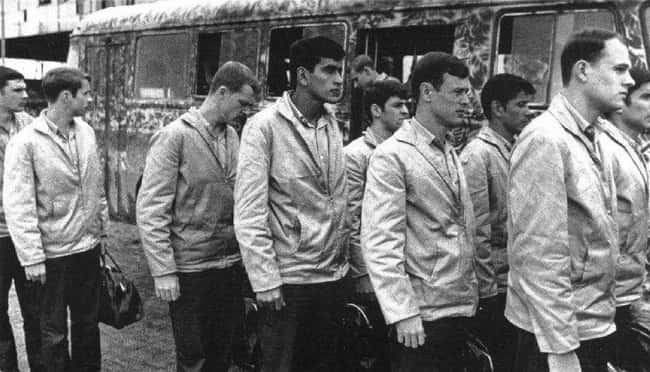This is another story from the Angry Staff Officer, Again you can thank Mack for turning me into the site. The ASO uses Star Wars mostly along with Harry Potter to relate Military issues with cultural references and Star Wars is very popular for that reason. It is prudent especially of intelligence, all had their uses and never to "put all your intel eggs in one basket, try to get confirmation from other sources, be it another HUMINT source or SIGINT or other means".
The Star Wars storyline divides neatly into two sides: good and evil.
The latter possess a qualitative and quantitative edge in terms of
military hardware and personnel. The former clings to intangible
advantages in pluck, optimism, and desperation. It is desperation that
encourages the scrappy underdogs to take chances they otherwise might
not, like attacking a Death Star with a small force of fighter
spacecraft. However, risky desperation is a double-edged sword and the
rebel insurgents suffer from of their high stakes gambles when they
ritually cling to human intelligence as the basis for crisis
decision-making.
Human intelligence, or HUMINT, is an intelligence discipline
doctrinally described as information provided by human sources. In
comparison to more expensive forms of intelligence collection, like a
space-based sensor or whatever other shiny toys the Empire or First
Order can choose to allocate resources to, it’s relatively cheap. And
cheap is just the right price point for a patchy, distressed rebellion.
In the penultimate episode of the Star War franchise, “The Force
Awakens,” the Resistance was more desperate than usual and looked for
any information that could assist them against their intergalactic
adversary, the First Order. The only thing they knew for sure, based on a
reconnaissance flight and a preliminary human intelligence report was
that Starkiller base was decidedly operational. It previously destroyed
the capital of the Republic employing a “hyper lightspeed weapon” that
drew energy from a nearby sun. In addition, Starkiller base seemed
invulnerable. Always the downer, Admiral Ackbar noted that like previous
planet killers it employed a defensive shield. Their survival at stake,
the shield needed to be shut down and this weapon of mass destruction
needed to be eliminated if the Resistance was to continue resisting. But
first things first, they needed information about that shield. Enter
the enigmatic Finn, who
might know crucial details based on his previous occupation in the employ of the First Order…
Finn, a First Order defector and prior storm trooper with additional
duties as a sanitation troop (or perhaps a sanitation troop with
additional duties as an infantryman? His primary and secondary job
descriptions were murky…), was a mixed bag. What was very evident,
however, was that Finn did not adequately explain his previous
employment roles & responsibilities until the Resistance attack was
well underway.
Han Solo, choosing to ask questions that probably should have been raised early in pre-mission planning, inquires thusly:
HAN: “What was your job when you were based here?”
FINN: “Sanitation.”
HAN: “Sanitation? Then how do you know how to disable the shields?”
FINN: “I don’t. I’m just here to get Rey.”
Finn’s motivation/obsession with his captured compatriot Rey, should
have been obvious. He proclaimed as much in his first interaction with
Princess Leia which was facilitated by Poe Dameron:
POE: “General Organa. Sorry to interrupt, this is Finn, he needs to talk to you.”
LEIA: “And I need to talk to him. That was incredibly brave, what you did. Renouncing the First Order, saving this man’s life…
FINN: “Thank you, ma’am — but a friend of mine was taken prisoner—“
LEIA: “Han told me about the girl, I’m sorry.”
Here Poe unnecessarily interjects, suggesting Finn has knowledge that
he, as previously demonstrated, simply did not have. He draws the
unreasonable conclusion that since Finn worked at Starkiller base then
he undoubtedly possessed knowledge of the technical details that defend
the planet-sized garrison.
POE: “Finn’s familiar with the weapon that destroyed the Hosnian system. He worked on the base.”
LEIA: “We’re desperate for anything you can tell us.”
FINN: “That’s where my friend was taken — I’ve got to get there, fast.”
LEIA: “And I will do everything I can to help, but first you must tell us all you know.”

F-N, huh? I’m going to call you… Curveball. (Lucasfilm, Ltd)
Poe wants Finn to be the golden human intelligence (HUMINT) source so
badly that he is willing to allow himself to be deceived and thus
endanger the Resistance’s entire operation. And the Resistance’s
desperation combined with their unquenchable thirst for genuine HUMINT
nearly led to a catastrophic mission failure at the hands of an
unreliable human intelligence source. Meanwhile, Finn very transparently
conveys that his motivation is not ideological. Its Rey, he’s not in it
for their revolution. Only a well-timed traditional Star Wars deus ex
machina saved our heroes in order to set up the franchise for “The Last
Jedi.”
Political leaders and military commanders understandably desire
decisive intelligence that leads to mission success. Sometimes the
apparent value of information offered by a human source seems to be more
reliable than that obtained by technical sources. Sometimes it appears
just
too good to be discounted. One’s survival complicates the
need for disciplined source vetting. But in their rush for indisputable
proof, leaders often overlook some key signals that might render a human
source less trustworthy. They might observe the words of another
wartime cinema hero, Lieutenant Aldo Raine, “we hear a story too good to
be true – it ain’t.”
HUMINT in Star Wars: A Short Chronology

And cousin, the HUMINT business is a-boomin (Inglourious Basterds Wiki)
The Star Wars universe is filled with examples of human intelligence
assets, some with questionable motives and usefulness. As early as the
first in the series (“Star Wars: Episode IV – A New Hope”) the Rebel
Alliance leveraged data provided by Princess Leia, engaging in her own
bit of clandestine espionage. This data pointed to a fatal flaw in the
Death Star that the Rebel attackers used to destroy it, in a plot
parallel nearly identical to “The Force Awakens.” This successful
HUMINT/insurgent operation (described in detail in the Star War spin-off
“RogueOne”) condemned the Alliance to repeatedly allow themselves to be
lured by future HUMINT possibilities. In short, after “A New Hope,” the
rebels were hooked on HUMINT.

Shining white gowns were *the* clothing of choice for covert work in 1977 (Lucasfim, Ltd)
In “The Empire Strikes Back,” one sees the evil adversary engaging in
HUMINT ops as well. Boba Fett, labeled a “bounty hunter,” was
essentially a HUMINT agent contracted by the Empire. “Empire” shows an
example of mixed motivations in HUMINT operations somewhat similar to
Finn and the Resistance’s dueling inspirations. Boba Fett desires to
capture Han Solo for the bounty offered by Jabba the Hutt, but the
Empire employs Boba Fett to find Luke Skywalker. This leads to the
awkward exchange:
DARTH VADER: “You may take Captain Solo to Jabba the Hutt after I have Skywalker.”
BOBA FETT: “He’s no good to me dead.”
DARTH VADER: “He will not be permanently damaged.”
Luckily for the Empire these mixed motivations are aligned enough
that despite their divergent goals the situation results in mission
success for the Empire. Not coincidentally, the power dynamic is
obviously weighted toward Darth Vader. In the Finn/Resistance example
the power dynamic is weighted toward Finn as the holder of what the
Resistance believes is valuable information.
“Empire” showcased another peril in executing HUMINT operations, the
double-agent. Lando Calrissian, a smooth talking scoundrel who was once
Han Solo’s friend and business partner, presented himself as a loyal
ally. However, his deception masked ongoing employment by the Empire
resulting in Han’s setup and eventual freezer nap. Despite Lando’s
unreliability leading to the near capture of Luke Skywalker, the
Rebellion’s faith in HUMINT persisted.

Emperor
Palpatine: “And I would’ve gotten away with it too, if it wasn’t for
you and your furry, contrived plot device.” (Lucasfilm, Ltd)
“Return of the Jedi” features a classic example of HUMINT deception
and lays bare the Rebellion’s desire for HUMINT borne of desperation.
The cunning Emperor, finally capitalizing on the Rebellion’s weakness
for too-good-to-be-true human intelligence, allowed plans for his new
and improved Death Star to fall into their hands. Dangling this juicy,
yet deceptive, intel nugget he lured the Rebellion into a trap that he
hoped would destroy them. Only a cuddly deus ex
ewok saves the Rebels from annihilation.
Beware of the Spies

Fast-forwarding thirty years to “The Force Awakens” we observe a
Resistance that still has not learned their lesson regarding unreliable
HUMINT agents. Will the Resistance cut the cord on their HUMINT-reliance
in “The Last Jedi”? Doubtful.
Since the Rebels are perpetual underdogs they continually find
themselves strapped for any scraps of enemy information. This situation
makes them vulnerable to deception and misinformation. With seemingly no
way out, their backs against the wall, and any number of other clichés,
it is reasonable to assume that whomever the last Jedi turns out to be,
his or her undoing will result from some form of human intelligence
failure.











































